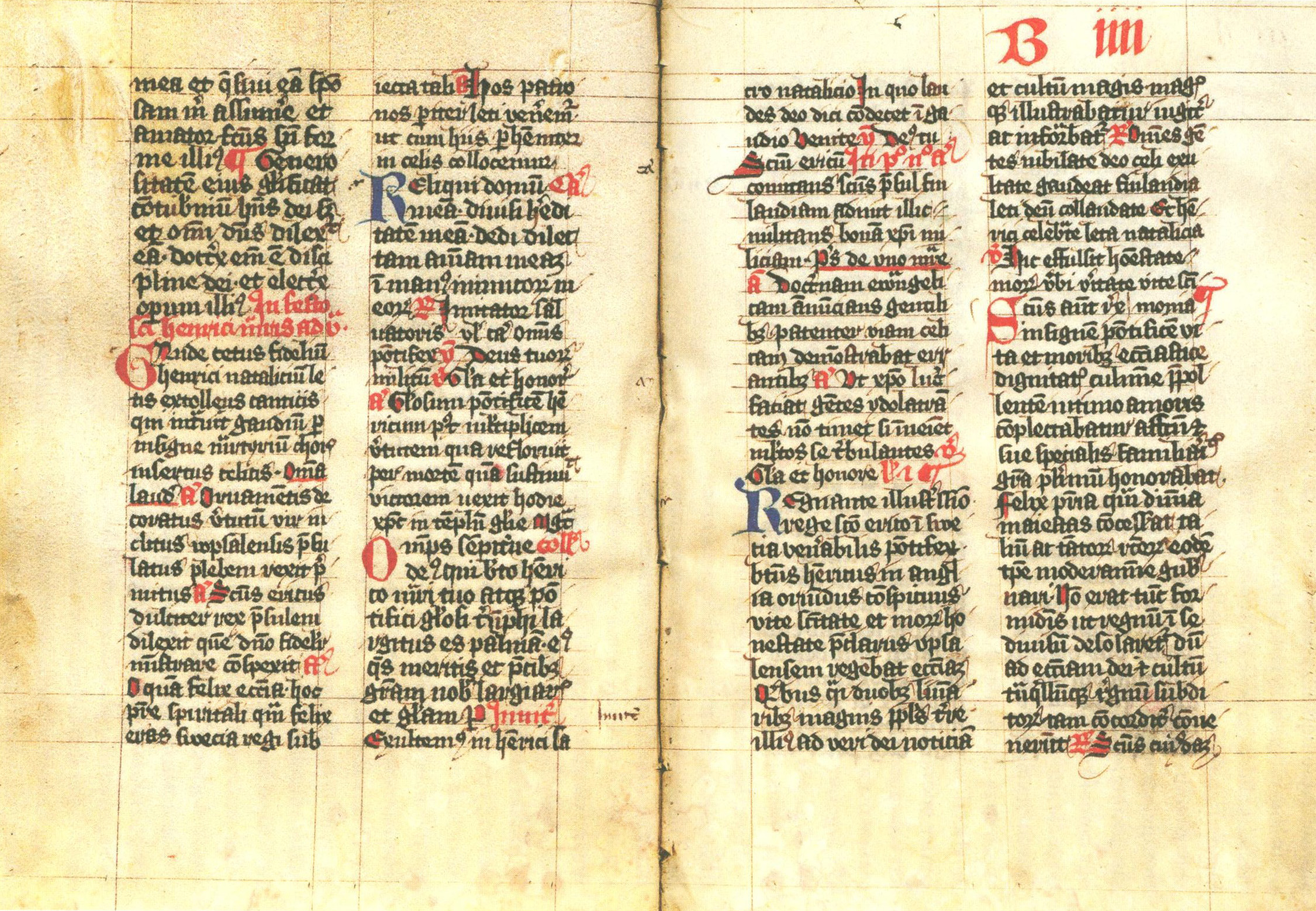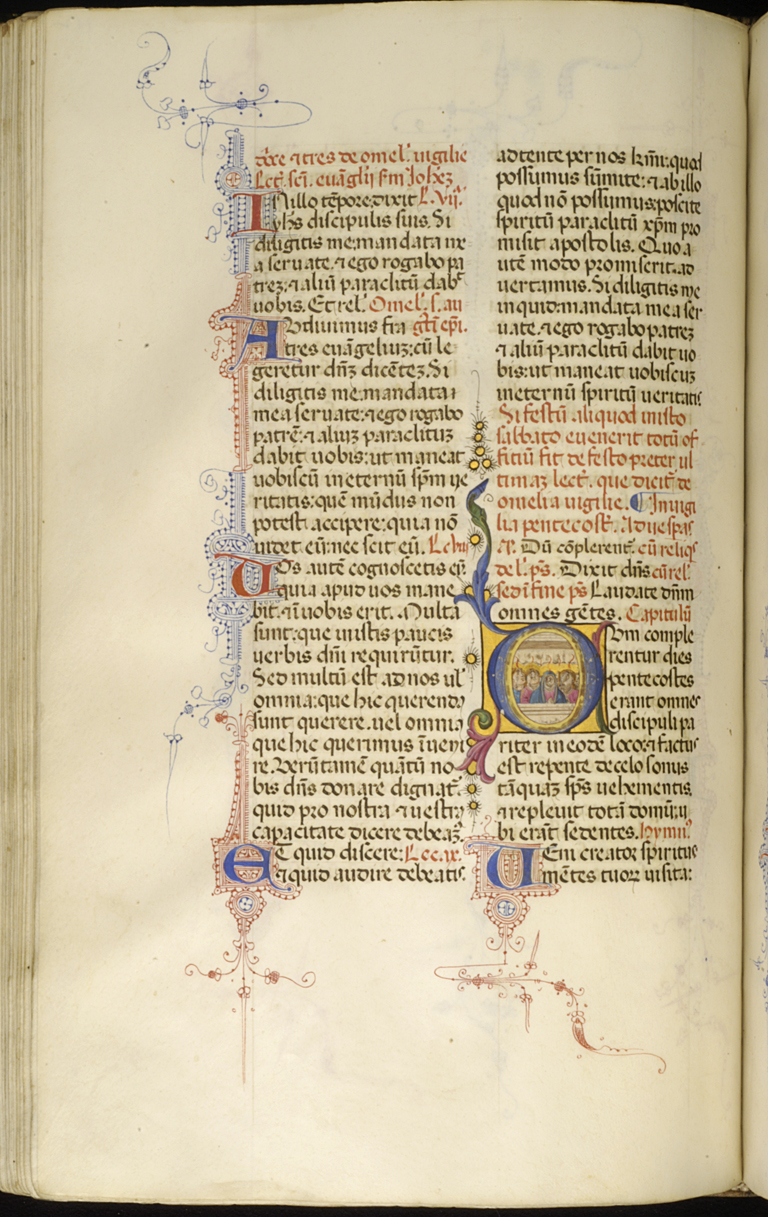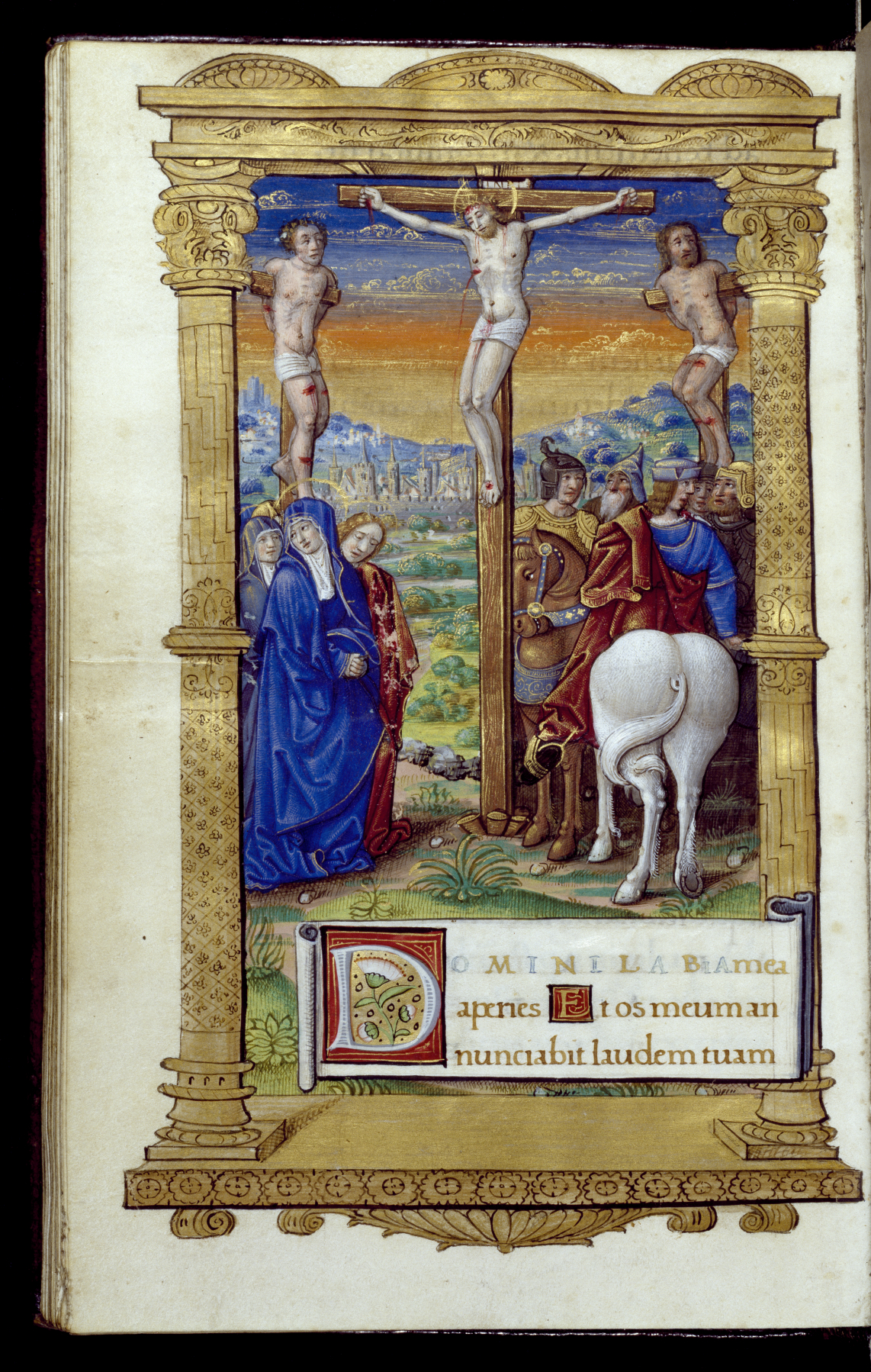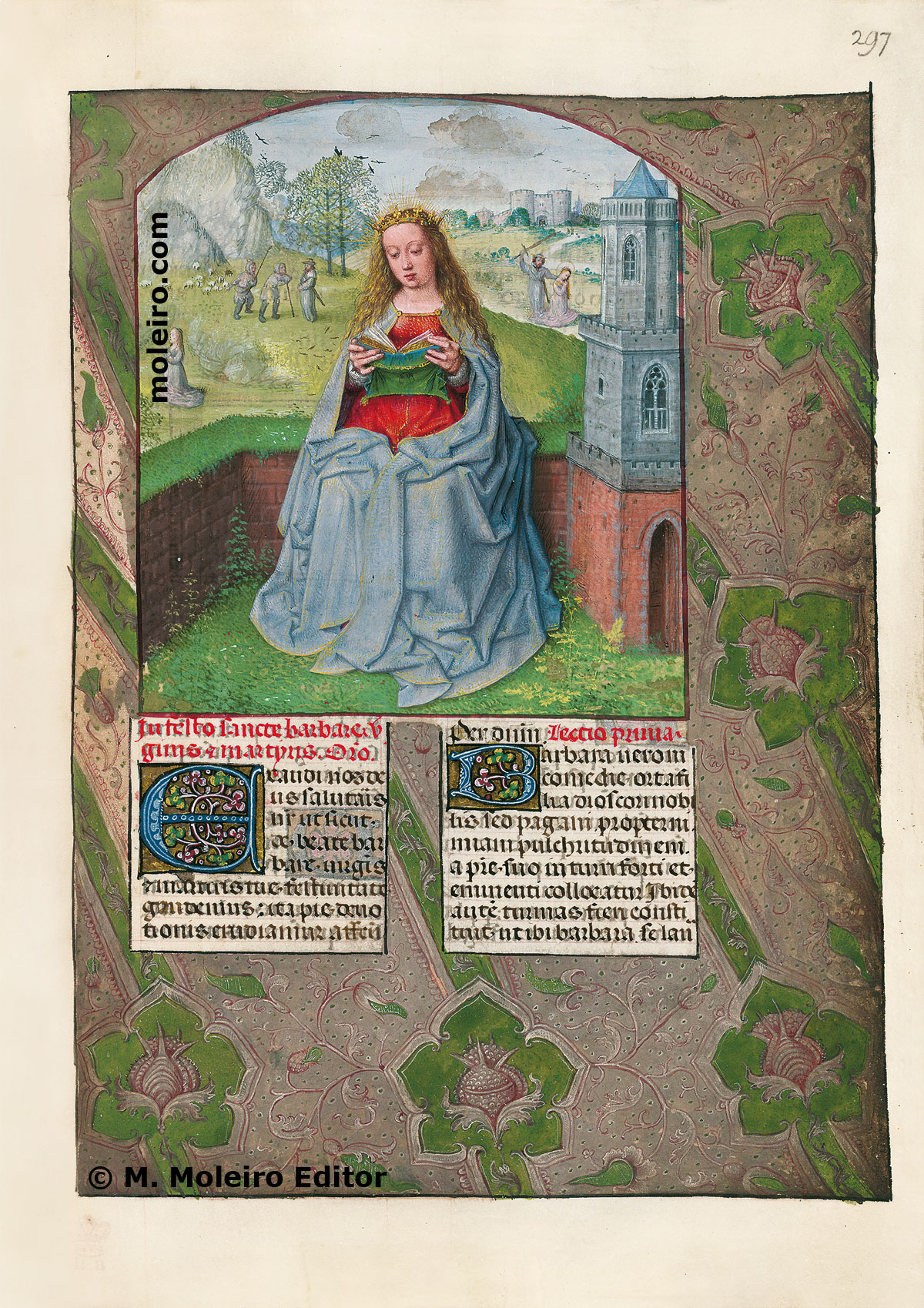|
Breviaries
A breviary () is a liturgical book used in Christianity for praying the canonical hours, usually recited at seven fixed prayer times. Historically, different breviaries were used in the various parts of Christendom, such as Aberdeen Breviary, Belleville Breviary, Stowe Breviary and Isabella Breviary, although eventually the Roman Breviary became the standard within the Roman Catholic Church (though it was later supplanted with the Liturgy of the Hours); in other Christian denominations such as the Lutheran Churches, different breviaries continue to be used, such as The Brotherhood Prayer Book. Different breviaries The "contents of the breviary, in their essential parts, are derived from the early ages of Christianity", consisting of psalms, Scripture lessons, writings of the Church Fathers, as well as hymns and prayers. From the time of the early Church, the practice of seven fixed prayer times, being attached to , have been taught; in ''Apostolic Tradition'', Hip ... [...More Info...] [...Related Items...] OR: [Wikipedia] [Google] [Baidu] |
Roman Breviary
The Roman Breviary (Ecclesiastical Latin, Latin: ''Breviarium Romanum'') is a breviary of the Roman Rite in the Catholic Church. A liturgical book, it contains public or canonical Catholic prayer, prayers, hymns, the Psalms, readings, and notations for everyday use, especially by bishops, priests, and deacons in the Divine Office (i.e., at the canonical hours, the Christians' daily prayer). The volume containing the daily hours of Catholic prayer was published as the ''Breviarium Romanum'' (Roman Breviary) from its ''editio princeps'' in 1568 under Pope Pius V until the reforms of Paul VI (1974), when replaced by the Liturgy of the Hours. In the course of the Catholic Counter-Reformation, Pope Pius V (r. 1566–1572) imposed the use of the Roman Breviary, mainly based on the ''Breviarium secundum usum Romanae Curiae'', on the Latin Church of the Catholic Church. Exceptions are the Benedictines and Dominican Order, Dominicans, who have breviaries of their own, and two surviving ... [...More Info...] [...Related Items...] OR: [Wikipedia] [Google] [Baidu] |
Christian Prayer
Christian prayer is an important activity in Christianity, and there are several different forms used for this practice. Christian prayers are diverse: they can be completely spontaneous, or read entirely from a text, such as from a breviary, which contains the canonical hours that are said at fixed prayer times. While praying, certain gestures usually accompany the prayers, including folding one's hands, Bowing#Christianity, bowing one's head, kneeling (often in the kneeler of a pew in corporate worship or the kneeler of a prie-dieu in private worship), and Prostration#Christianity, prostration. The most prominent prayer among Christians is the Lord's Prayer, which according to the gospel accounts (e.g. wikisource:Bible (American Standard)/Matthew#6:9, Matthew 6:9-13) is how Jesus in Christianity, Jesus taught his Disciple (Christianity), disciples to pray. The injunction for Christians to pray the Lord's Prayer thrice daily was given in ''Didache'' 8, 2 f., which, in turn, was ... [...More Info...] [...Related Items...] OR: [Wikipedia] [Google] [Baidu] |
Canonical Hours
In the practice of Christianity, canonical hours mark the divisions of the day in terms of Fixed prayer times#Christianity, fixed times of prayer at regular intervals. A book of hours, chiefly a breviary, normally contains a version of, or selection from, such prayers. In the Roman Rite of the Catholic Church, canonical hours are also called officium, since it refers to the official prayer of the Church, which is known variously as the ("divine service" or "divine duty"), and the ("work of God"). The current official version of the hours in the Roman Rite is called the Liturgy of the Hours () or ''divine office''. In Lutheranism and Anglicanism, they are often known as the daily office or divine office, to distinguish them from the other "offices" of the Church (e.g. the administration of the sacraments). In the Eastern Orthodox Church, Eastern Orthodox and Byzantine Rite, Byzantine Catholic Churches, the canonical hours may be referred to as the Divine Service (Eastern Or ... [...More Info...] [...Related Items...] OR: [Wikipedia] [Google] [Baidu] |
Fixed Prayer Times
Fixed prayer times, praying at dedicated times during the day, are common practice in major world religions such as Judaism, Christianity, and Islam. Judaism Jewish law requires Jews to pray thrice a day; the morning prayer is known as Shacharit, the afternoon prayer is known as Mincha, and the evening prayer is known as Maariv. According to Jewish tradition, the prophet Abraham introduced Shacharit, the prophet Isaac introduced Mincha, and the prophet Jacob introduced Maariv. Jews historically Jewish prayer, prayed in the direction of the Temple in Jerusalem, where the "presence of the transcendent God (''shekhinah'') [resided] in the Holy of Holies of the Temple". In the Hebrew Bible, it is written that when the prophet Daniel (biblical figure), Daniel was in Babylon, he "went to his house where he had windows in his upper chamber open to Jerusalem; and he got down upon his knees three times a day and prayed and gave thanks before his God, as he had done previously" (cf. ). Af ... [...More Info...] [...Related Items...] OR: [Wikipedia] [Google] [Baidu] |
The Brotherhood Prayer Book
Evangelisch-Lutherische Gebetsbruderschaft (''Evangelical Lutheran Prayer Brotherhood'') is a German Lutheran religious society for men and women, based on the doctrines of the Bible and Book of Concord, with regular prayer for the renewal and unity of the Church. Prayer Brotherhood was founded in Leipzig by Lutheran theological students. The main objectives in the beginning were Augsburg Confession, regular Eucharist on Sundays, and the daily office with mutual prayer. The Brotherhood uses its own breviary, the ''Breviarium Lipsiensae: Tagzeitengebete'' ("Leipzig Breviary: Prayer of the Times of the Day"). It is one-volume breviary, in German with occasional Latin, containing a lectionary and four liturgical hours per day, with all 150 psalms, divided for four weeks. Musically it is descendant of the Alpirsbach movement. The Leipzig Breviary is also the main source for ''The Brotherhood Prayer Book'' of the Lutheran Liturgical Prayer Brotherhood, a confessional Lutheran confra ... [...More Info...] [...Related Items...] OR: [Wikipedia] [Google] [Baidu] |
Fixed Prayer Times
Fixed prayer times, praying at dedicated times during the day, are common practice in major world religions such as Judaism, Christianity, and Islam. Judaism Jewish law requires Jews to pray thrice a day; the morning prayer is known as Shacharit, the afternoon prayer is known as Mincha, and the evening prayer is known as Maariv. According to Jewish tradition, the prophet Abraham introduced Shacharit, the prophet Isaac introduced Mincha, and the prophet Jacob introduced Maariv. Jews historically Jewish prayer, prayed in the direction of the Temple in Jerusalem, where the "presence of the transcendent God (''shekhinah'') [resided] in the Holy of Holies of the Temple". In the Hebrew Bible, it is written that when the prophet Daniel (biblical figure), Daniel was in Babylon, he "went to his house where he had windows in his upper chamber open to Jerusalem; and he got down upon his knees three times a day and prayed and gave thanks before his God, as he had done previously" (cf. ). Af ... [...More Info...] [...Related Items...] OR: [Wikipedia] [Google] [Baidu] |
Shehimo Breviary
Shehimo (, ; English language, English: Book of Common Prayer, also spelled Sh'himo) is the West Syriac Rite, West Syriac Christian breviary of the Syriac Orthodox Church and the West Syriac Rite, West Syriac Saint Thomas Christians of India (Syro-Malankara Catholic ChurchJacobite Syrian Christian Church, , Malankara Jacobite Syrian Church, Malankara Orthodox Syrian Church, Mar Thoma Syrian Church, Marthoma Syrian Church and Malabar Independent Syrian Church, Thozhiyur Church) that contains the seven canonical hours of prayer. The Shehimo includes Bible readings, hymns and other prescribed prayers from the West Syriac Liturgical system. Within the breviary there are certain prayers that are recited at fixed prayer times, seven fixed prayer times, while direction of prayer, facing the east at home or at church. The Shehimo also provides communal prayers as an introduction to the Holy Qurobo, Holy Qurbono. The practice of praying during the canonical hours has its roots taken from ... [...More Info...] [...Related Items...] OR: [Wikipedia] [Google] [Baidu] |
Christianity
Christianity is an Abrahamic monotheistic religion, which states that Jesus in Christianity, Jesus is the Son of God (Christianity), Son of God and Resurrection of Jesus, rose from the dead after his Crucifixion of Jesus, crucifixion, whose coming as the Messiah#Christianity, messiah (Christ (title), Christ) was Old Testament messianic prophecies quoted in the New Testament, prophesied in the Old Testament and chronicled in the New Testament. It is the Major religious groups, world's largest and most widespread religion with over 2.3 billion followers, comprising around 28.8% of the world population. Its adherents, known as Christians, are estimated to make up a majority of the population in Christianity by country, 157 countries and territories. Christianity remains Christian culture, culturally diverse in its Western Christianity, Western and Eastern Christianity, Eastern branches, and doctrinally diverse concerning Justification (theology), justification and the natur ... [...More Info...] [...Related Items...] OR: [Wikipedia] [Google] [Baidu] |
Isabella Breviary
The Isabella Breviary (Ms. 18851) is a late 15th-century illuminated manuscript now in the British Library, London. Queen Isabella I of Castile was given the manuscript shortly before 1497 by her ambassador Francisco de Rojas to commemorate the double marriage of her children and the children of Emperor Maximilian of Austria and Duchess Mary of Burgundy. Origin The work known as the breviary of Isabella I of Castile is a ''Breviarium Romanum'' made in Flanders for a Castilian nobleman Francisco de Rojas near the end of the 15th century. It was a present for Isabel at the occasion of the marriage of her children with the children of Maximilian.On Folio 437 recto the Coat of arms and the motto of Francisco de Rojas can be found together with the dedication of the codex. Francisco de Rojas y Escobar was a Castilian diplomat who carried out several important diplomatic missions for Ferdinand. He negotiated the marriage between Infante Juan, the Crown Prince, and Margaret of ... [...More Info...] [...Related Items...] OR: [Wikipedia] [Google] [Baidu] |
Church Fathers
The Church Fathers, Early Church Fathers, Christian Fathers, or Fathers of the Church were ancient and influential Christian theologians and writers who established the intellectual and doctrinal foundations of Christianity. The historical period in which they worked became known as the Patristics, Patristic Era and spans approximately from the late 1st to mid-8th centuries, flourishing in particular during the 4th and 5th centuries, when Christianity was in the process of establishing itself as the State church of the Roman Empire, state church of the Roman Empire. For many denominations of Christianity, the writings of the Ante-Nicene Fathers, Nicene Fathers and Christianity in the 5th century#Post-Nicene Fathers, Post-Nicene Fathers are included in Sacred tradition, Sacred Tradition. As such, in traditional dogmatic theology, authors considered Church Fathers are treated as authoritative for the establishment of doctrine. The academic field of patristics, the study of the Chu ... [...More Info...] [...Related Items...] OR: [Wikipedia] [Google] [Baidu] |
Hymn
A hymn is a type of song, and partially synonymous with devotional song, specifically written for the purpose of adoration or prayer, and typically addressed to a deity or deities, or to a prominent figure or personification. The word ''hymn'' derives from Greek language, Greek (''hymnos''), which means "a song of praise". A writer of hymns is known as a hymnist. The singing or composition of hymns is called hymnody. Collections of hymns are known as hymnals or hymn books. Hymns may or may not include instrumental accompaniment. Polyhymnia is the Greco/Roman goddess of hymns. Although most familiar to speakers of English in the context of Christianity, hymns are also a fixture of other major religious groups, world religions, especially on the Indian subcontinent (''stotras''). Hymns also survive from antiquity, especially from Egyptian and Greek cultures. Some of the oldest surviving examples of notated music are hymns with Greek texts. Origins Ancient Eastern hymns include th ... [...More Info...] [...Related Items...] OR: [Wikipedia] [Google] [Baidu] |
Apostolic Tradition
The ''Apostolic Tradition'' (or ''Egyptian Church Order'') is an early Christian treatise which belongs to the genre of the ancient Church Orders. It has been described to be of "incomparable importance as a source of information about church life and liturgy in the third century". Rediscovered in the 19th century, it was given the name of "Egyptian Church Order". In the first half of the 20th century, this text was commonly identified with the lost ''Apostolic Tradition'' presumed to have been written by Hippolytus of Rome. Due to this attribution, and the apparent early date of the text, ''Apostolic Tradition'' played a crucial role in the liturgical reforms of many mainstream Christian bodies. The attribution of the text to Hippolytus has since become a subject of continued debate in recent scholarship. If the ''Apostolic Tradition'' is the work of Hippolytus of Rome, it would be dated before 235 AD (when Hippolytus is believed to have suffered martyrdom) and its origin would ... [...More Info...] [...Related Items...] OR: [Wikipedia] [Google] [Baidu] |










